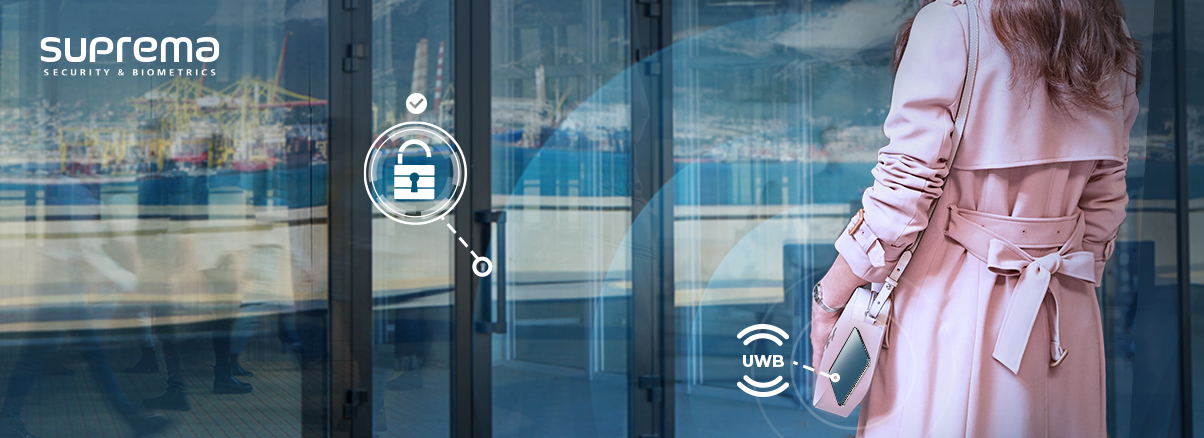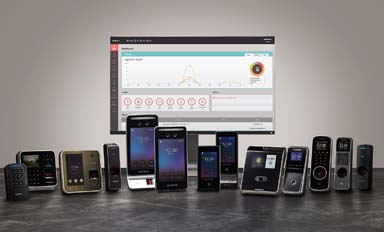- Latest press releases from Suprema

Throughout history, technology has generally been developed for the purpose of enriching human life. For example, early people were primarily focused on using technology to solve our most basic problems of food, health and shelter. Industrialization has since propelled us into a new era where these basic problems are less of a pressing concern in many areas of the world. But industrialization also came with an increase in complexity, creating a greater demand for people’s attention throughout the day and constantly burdening us with time constraints and frustrating inconveniences.
Because of this, the concept of “abundance” can now be seen to take on a new meaning. Assuming one’s basic needs are sufficiently met, life can be more enriched by focusing on the removal of inconveniences that waste our precious time and energy. This is something that modern technological development needs to take into account in order to be successful.
As an example of this, the mobile and cloud industries are highly driven by the constant pursuit of ‘a more convenient user experience’. Every company in this space strives to provide the most useful features while eliminating as much complexity as possible, and these achievements are now leading development across multiple industries.
Physical access security is another industry where the technology has been steadily developed with user convenience in mind. Keys were replaced with RF access cards that are much more convenient to carry, which gave way to biometric readers that do not require the user to carry anything at all. We also now have mobile access readers which fall in line with the continued development of mobile technology.
However, there is still one penultimate goal that everybody in the physical access security industry has long dreamed of, but that has yet to be realized: walk-through access control. This refers to a process in which the access control system is able to automatically verify credentials and open a door as a person approaches, without the user having to interact with the system at all. In other words, if the user just walks toward a door without paying any special attention to it, the door will open — completely removing the inconvenience for users to deal with the access control system at all.
Creating the new standard in convenience
Walk-through access control has been a hot issue in the physical security industry since AI-based face recognition systems began to spread about four or five years ago. It was originally built as an example of how AI-based face recognition technology could authenticate a user from a long distance. However, remote authentication unfortunately also led to many cases where users were given access in error when they had no intent to enter, so the technology was rarely used. Walk-through access control requires highly accurate distance measurement and confirmation of one’s intention to enter a portal — two problems that long-distance face recognition technology alone could not solve.
However, the past few years have seen the rise of ultra-wideband (UWB) technology that is capable of measuring distance very accurately, and the possibility of true walk-through access control is once again attracting attention. Previous RF technologies such as Bluetooth Low Energy Protocol (BLE) had a large deviation of two to three meters, which made it difficult to accurately measure distance. But UWB technology can determine a user’s intention to enter a door with a deviation of just five to 10 centimeters. An accurate distance measurement is now possible with UWB and is already being put to good use: for example, the Hyundai Genesis GV60 SUV model uses UWB with face recognition to open the vehicle door as the driver approaches.
There are barriers that must be overcome when commercializing any technology, and the same applies to UWB. The most important condition that must be met for the commercialization of UWB technology is the spread of smartphones equipped with UWB. While the technical possibilities of UWB have been widely discussed for the past two to three years, the slow UWB integration rate by the smartphone industry has made other related industries hesitant to develop UWB-compatible products. There has also been some uncertainty about the logistics of controlling a smartphone’s built-in UWB with an API from a general app, as opposed to the smartphone manufacturer’s apps.
However, recent changes have made it clear that the barriers to commercialization of UWB are disappearing. Apple has been installing UWB in all iPhones since the iPhone 11 launched in 2019. Samsung Electronics has also been continuously installing UWB in its flagship Galaxy models since the launch of the Note 20 in August 2020. Considering that the life cycle of a smartphone in the domestic market is two to three years, it is highly likely that the majority of smartphone users will have a UWB-supported device by 2025.
UWB APIs (application program interfaces) for iOS and Android have also been released. In October 2020, Apple released a 'Nearby Interaction' API for iOS that can measure distance and direction using UWB. In the case of Android, UWB-related functions have been supported since the launch of Android 12 in October 2021, but use of the API was originally limited to smartphone manufacturers. However, Android has since opened the door for third-party app developers to use the UWB API through the Jetpack update released in June 2022.
In fact, it can be seen that the barriers to UWB commercialization have now virtually collapsed or are in the process of being demolished. The only remaining barrier to stable, reliable walk-through access control is that it needs to be developed. Soon, UWB technology will be commercialized by the physical access control industry to create products and services that allow users to safely access doors without any concern as long as they are carrying a UWB-certified smartphone.
If you think back to around 10 years ago, walk-through access authentication was just a fancy out of the realm of imagination. But modern technological innovations are now making many of our previous dreams come true. I look forward to an enriched future in just a year or two’s time when access authentication — which was once considered to be somewhat of a burden — is approached as a natural act that does not require any special attention.
Click here for Understanding UWB, Part 1: Ultra-wideband and the future of access security.











